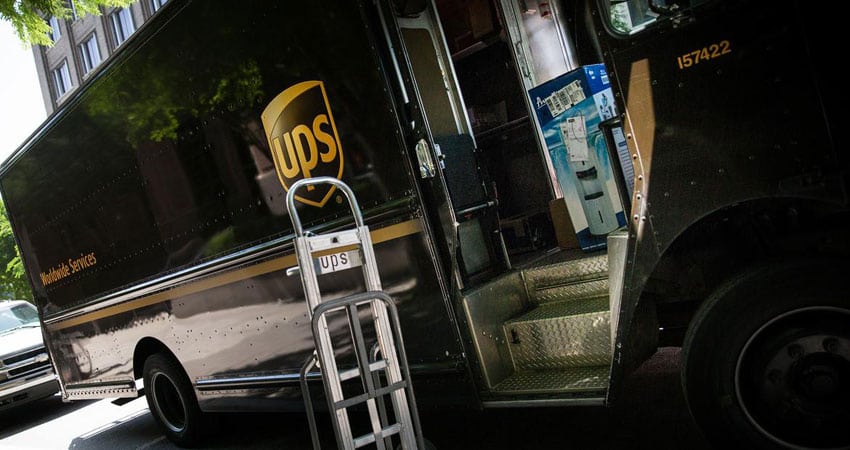UPS announced it will implement peak season surge pricing to offset the cost of a huge spike in its shipping volume during the extreme rush at the end of the year. A similar announcement has not been made by FedEx, although the carriers often shadow each other’s pricing moves.
“We’re focused on helping our customers achieve success during some of their most important selling seasons,” said UPS Chief Commercial Officer Alan Gershenhorn in a release. “To meet their requirements, UPS flexes its delivery network to process near double our already massive regular daily volume, and that creates exceptional demands.”
UPS said it was instituting the surcharge rates to offset the increasing costs of meeting peak demand, including paying for additional air and truck cargo capacity, temporary facilities and additional sorting and delivery workers “on a temporary basis and often at shorter-term premium rates.”
The following chart details the surge pricing increases vs. current rates for the continental U.S. and intrastate in Alaska and Hawaii:
| 11/19-11/25 | 11/26-12/2 | 12/3-12/9 | 12/10-12/16 | 12/17-12/23 | |
| Next-Day Air residential | N/A | N/A | N/A | N/A | $0.81 |
| 2nd Day Air residential | N/A | N/A | N/A | N/A | $0.97 |
| 3-Day Select residential | N/A | N/A | N/A | N/A | $0.97 |
| Ground residential | $0.27 | $0.27 | N/A | N/A | $0.27 |
In addition, UPS plans to add peak surcharges to packages that exceed maximum size and weight limits. “Shipments which are larger, heavier or have unconventional shapes or sizes create greater operational complexity during high-demand periods,” UPS said in its release.
During the 2016 holiday season, UPS said its average daily volume exceeded 30 million packages on more than half of the available shipping days, compared to an average of more than 19 million on non-peak days, an increase of 60%. The company hired about 95,000 seasonal employees during the period.
Rob Martinez, CEO and co-founder of parcel negotiation firm Shipware, said the changes tie back to the disastrous 2013 holiday season, when 1 million packages were late for Christmas, leading UPS to invest hundreds of millions to add peak capacity. Since then, Martinez said, peak fulfillment has gone smoother, and the company has been able to get a better handle on its fixed costs.
In past years, UPS has handled cost overruns by negotiating the level of volume discounts with a limited number of major retail shippers; the difference this time is that it’s a general surge price spread across all shippers.
“They’re simply continuing to follow a strategy of cost-based pricing, and exercising their right to have customers participate in those higher costs,” Martinez said. “I’ve been anticipating this since 2014, and it’s taken a number of cost overruns to get here. I’m surprised they haven’t taken it sooner.”
The fact that the surge pricing is being announced in June means UPS is giving major shippers time to negotiate concessions well ahead of peak season, Martinez said. “If it happened in October it would be a done deal,” he said.
Jerry Hempstead of Hempstead Consulting, another parcel specialist, said he was surprised that UPS didn’t continue to address the impact of its massive investments to handle peak on operating margins by negotiating with the large-volume shippers.
“The expectation was that UPS was going to address these additional costs with the firms that create the holiday peak,” Hempstead said. “They surprised me and took a shotgun approach. So non-seasonal shippers like Express Scripts and CVS who send maintenance drugs to your home every day of the year have to shoulder some of the costs derived from a few.”
Nick McLean, CEO, OrderDynamics, said the UPS action, and carrier cost increases in general, represent an opportunity for retailers to explore in-store pickup programs, representing savings for them and the shopper while adding convenience and driving incremental sales.
“Retailers should insert a line just before online checkout reminding the shopper that an in-store pickup during the holiday season makes sure their item arrives on time, puts control in their hands and avoids the extra surcharge,” McLean said. “Best of all, since many shoppers will purchase more items on a pickup, it also increases revenue.”

